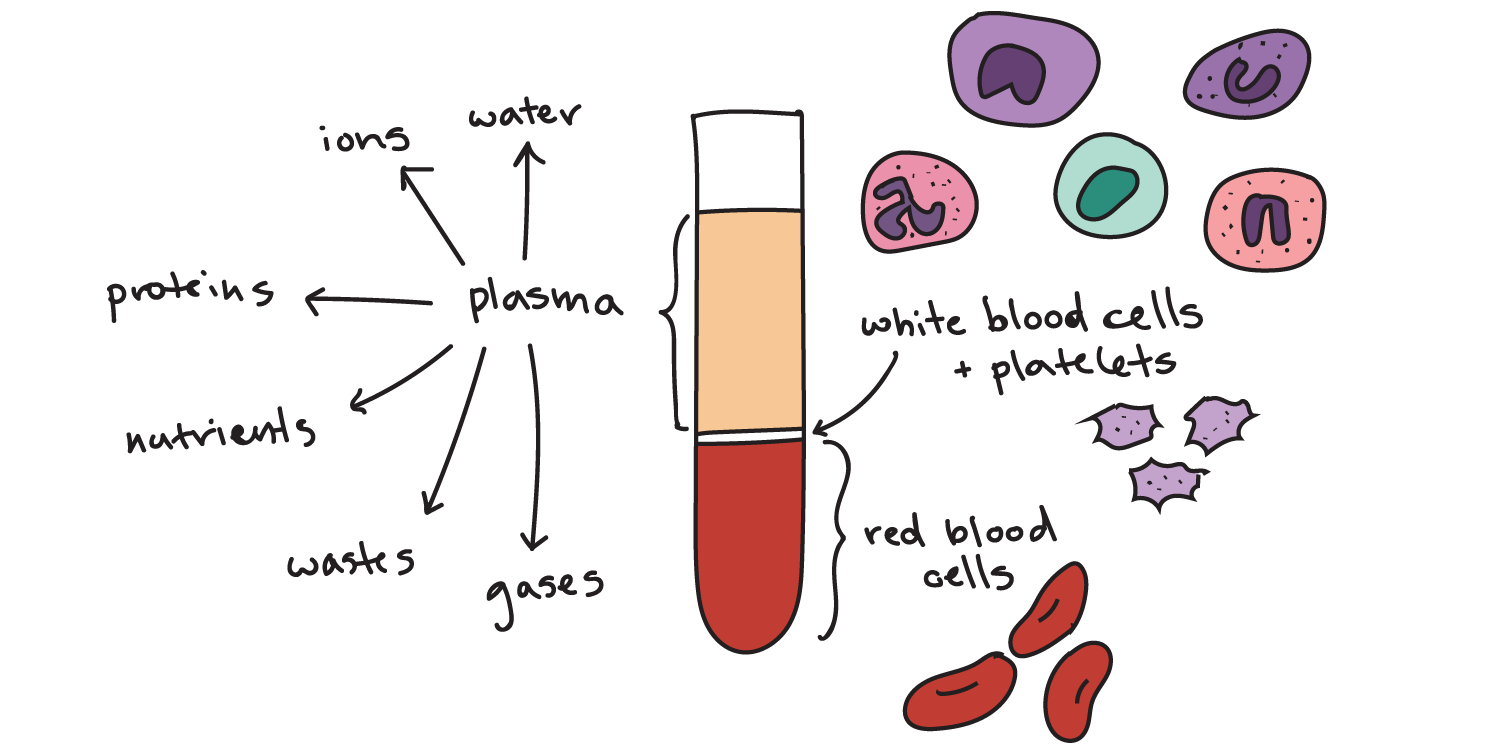
Blood is a remarkable fluid that courses through our bodies, sustaining life and ensuring the proper functioning of our organs. Comprising various components, each with a unique role, blood is the lifeline of our circulatory system. In this comprehensive article, we will explore the major components of blood and delve into their crucial functions.
The Composition of Blood
Blood consists of several distinct components, including:
1. Red Blood Cells (Erythrocytes)
Red blood cells, or erythrocytes, are the most abundant cells in the blood. They are responsible for the blood’s red color due to the presence of hemoglobin, an iron-containing protein. The primary function of red blood cells is to transport oxygen from the lungs to tissues throughout the body and return carbon dioxide, a waste product, from the tissues to the lungs for exhalation. Hemoglobin binds with oxygen in the lungs and releases it when it reaches the body’s cells.
2. White Blood Cells (Leukocytes)
White blood cells, or leukocytes, are essential components of the immune system. They help the body fight infections and foreign invaders, such as bacteria, viruses, and other pathogens. There are different types of white blood cells, each with its own specialized function. Neutrophils, for example, are phagocytes that engulf and destroy bacteria, while lymphocytes play a critical role in antibody production and immune memory.
3. Platelets (Thrombocytes)
Platelets are small, disk-shaped cell fragments that play a vital role in blood clotting and hemostasis. When a blood vessel is injured, platelets adhere to the damaged area and aggregate, forming a plug that helps stop bleeding. They also release clotting factors and enzymes that facilitate the coagulation process, ultimately leading to the formation of a stable blood clot.
4. Plasma
Plasma is the liquid component of blood, making up approximately 55% of total blood volume. It is a yellowish, straw-colored fluid that carries various substances throughout the body. Plasma is primarily composed of water, electrolytes (such as sodium and potassium), proteins (including albumin and globulins), hormones, waste products, and gases (like oxygen and carbon dioxide). It serves as a medium for the transportation of nutrients, hormones, and waste products.
Functions of Blood Components
Each of these blood components plays a critical role in maintaining health and supporting bodily functions:
1. Oxygen Transport (Red Blood Cells)
Red blood cells are designed to transport oxygen from the lungs to tissues and organs throughout the body. Hemoglobin binds with oxygen in the lungs, forming oxyhemoglobin, and releases it when red blood cells reach areas of the body with lower oxygen concentrations.
2. Immune Defense (White Blood Cells)
White blood cells are central to the body’s immune defense mechanisms. They identify and destroy pathogens, infected cells, and foreign substances, helping to prevent and combat infections.
3. Blood Clotting (Platelets)
Platelets are essential for preventing excessive bleeding. When a blood vessel is injured, they aggregate at the site and initiate the clotting process, forming a protective barrier to stop bleeding.
4. Transport and Regulation (Plasma)
Plasma serves as a transport medium, carrying nutrients, hormones, and waste products to and from cells. It also helps regulate blood pressure and pH balance in the body.
5. Maintenance of Blood Volume and Pressure
Blood components, including plasma, red blood cells, and platelets, work together to maintain proper blood volume and pressure. When blood pressure drops or blood volume decreases, the body can release hormones to stimulate red blood cell production or trigger clotting mechanisms to prevent excessive loss of blood.
Blood as a Diagnostic Tool
Blood analysis is a powerful diagnostic tool in healthcare. By examining blood components, doctors can gain insights into a person’s overall health, identify specific medical conditions, and monitor the progression of diseases. Common blood tests include complete blood counts (CBCs), which assess the numbers of red and white blood cells and platelets, and blood chemistry tests, which measure levels of various substances in the blood, such as glucose, cholesterol, and electrolytes.
Conclusion
Blood is a complex and dynamic fluid that sustains life by transporting oxygen, defending against pathogens, and maintaining proper bodily functions. Its major components—red blood cells, white blood cells, platelets, and plasma—work together in a delicate balance to ensure the body’s health and survival. Understanding the composition and functions of these components is essential for appreciating the vital role that blood plays in the human body and for diagnosing and treating a wide range of medical conditions.



